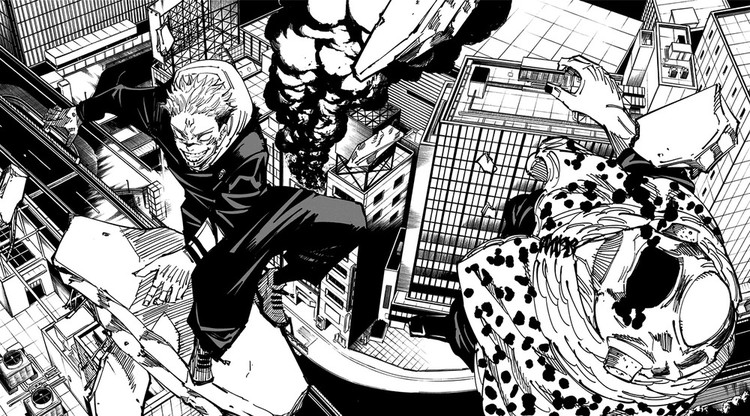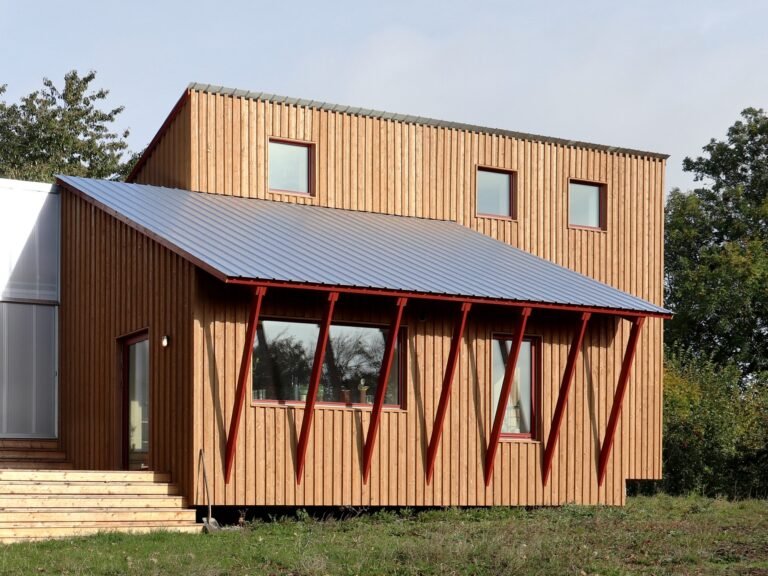Architecture in Japanese Manga: Exploring the World of Jujutsu Kaisen
Architecture in Japanese Manga: Exploring the World of Jujutsu Kaisen

Manga is an umbrella term for a wide variety of comic books and graphic novels originally produced and published in Japan, and unlike western comic books that we may be more familiar with seeing printed in full color, are primarily published in black and white. Manga is the Japanese word for comics published in Japan, with the word itself comprising of two kanji characters: man (漫) meaning ‘whimsical’ and ga (画) meaning ‘pictures’.
Not to be confused with the popular Japanese medium of anime, manga is print media whilst anime stands as visual media that is either hand-drawn or computer-produced, combining graphic art, characterization, cinematography, and other forms of creative and individualistic techniques. It is most notable that a lot of anime is developed as a result of a successful franchise that began as mere manga novels, but what continually unites the medium of manga and anime is the use of diverse art styles throughout various narratives that have been constructed for us consumers to follow.

From history and teenage romance to futuristic science fiction and profound themes of life, manga has become an important, almost inevitable aspect of Japan’s identity, helping spread knowledge and understanding of it across the globe. Mangakas, or manga artists, tend to incorporate multiple architectural backgrounds to help establish a spatiotemporal setting for the narrative, ranging from old and medieval villages to futuristic, high-rise cities. Narratives taking place in a real city are easily recognizable through their landmarks.
A notable example of the use of real city landmarks and locations is found in Jujutsu Kaisen, a manga written and illustrated by Gege Akutami, first published in Weekly Shonen Jump, the best-selling and longest-running shonen manga magazine published in Japan, in 2018. Jujutsu Kaisen centers around high school student, Yuji Itadori, who swallows a cursed talisman—the finger of a Cursed Demon—and subsequently becomes possessed. Yuji is sentenced to death by exorcism by Jujutsu Sorcerers, but before that happens, he is tasked with finding and consuming the Curse’s remaining fingers.


A later arc of the manga, named the Shibuya Incident, possesses a plentiful abundance of real-life locations and landmarks, depicting the streets of Shibuya City in Tokyo, Japan. Bunkamura Way is one of the roads directly in front of Shibuya Station in Dogenzaka and is where the majority of civilians were trapped during the early stages of the Shibuya Incident. The ability to pinpoint exact locations in the fictitious world that Gege Akutami has created and translate them into our real world further brings about a sense of realism for the reader.


Following on, somewhere in Shibuya’s business district emerges a large skyscraper that extends upward of forty stories. Shibuya C Tower is important in building the context of the narrative in which we are brought along to experience, fulfilling its role as the most noticeable spot in the area as it is over twice the size of the buildings surrounding it. In close proximity to the tower is the Shibuya line of the Metropolitan Expressway and Shoto Bunkamura Street where our protagonists are called to face a curse user.
A little later on, we find our female lead protagonist in an alleyway in Dogenzaka after heading toward Shibuya Station. She is confronted by a villainous clone and is caught up in a situation where she is urged to fight him using the narrow environment consisting of old signs, crumbling infrastructure, and tightly compacted buildings.

Architecture is also used to emphasize and communicate a character’s emotions, establishing a link between them and their surroundings. The setting of the scene can affect the way we are called to perceive the innermost thoughts of a character, used to capture a character’s inner struggle by isolating them or suggesting a character’s freedom by bringing them into a large open space. In this instance, in particular, the surrounding architecture is used as a primary element to guide the way in which the scrimmage between the two characters present in this scene pans out, as well as portraying our female lead’s inner turmoil and fear presently at the moment.

Jujutsu Kaisen is just one of the prime examples in which storytelling and narrative successfully utilize setting. The location is where stories are called to unfold, further inspiring the importance to see how they affect and are affected by the characters who interact in these built environments. Architecture as portrayed in manga continually helps to establish a social and political status without needing to explain anything through dialogue. As readers, we can simply infer, just by how a city is layered, whether the society is living in peace, is chaotic, post-apocalyptic, or dystopian.
The element of architecture continues to add a lot of meaning and value to the art styles present in the manga we see today. Just by playing with different settings and building on various architectural landscapes, the progression of each unique narrative can be repeatedly achieved and explored to a greater level of depth to fulfill curious and imaginative minds.





